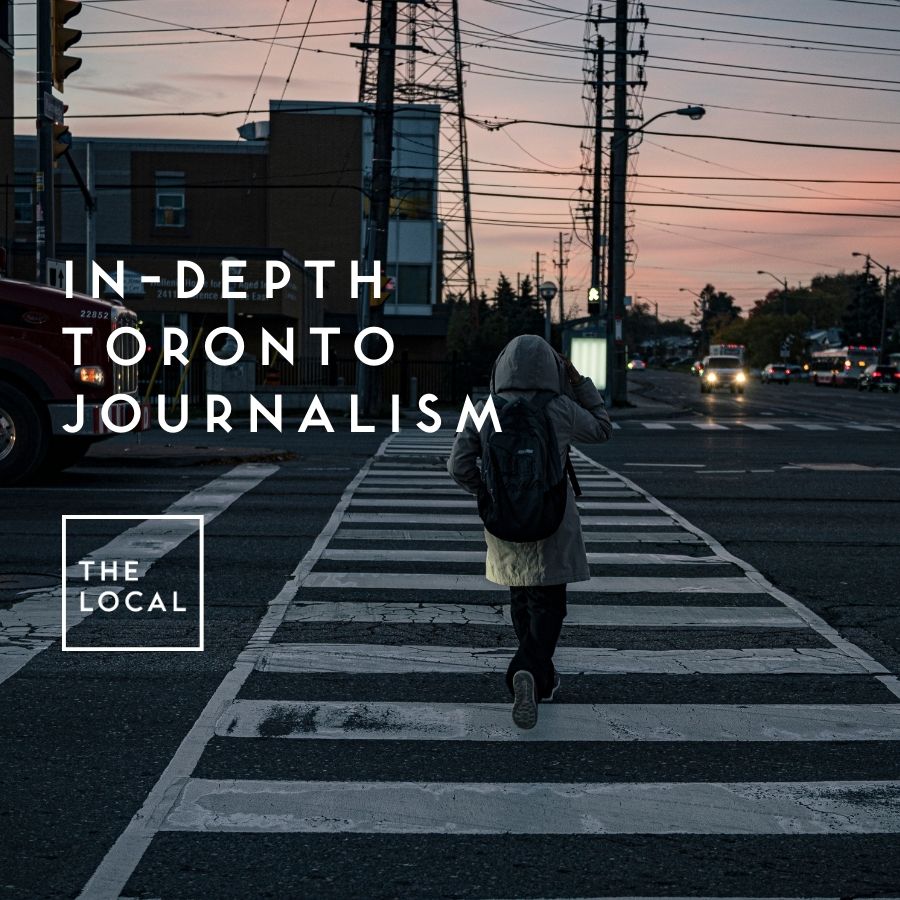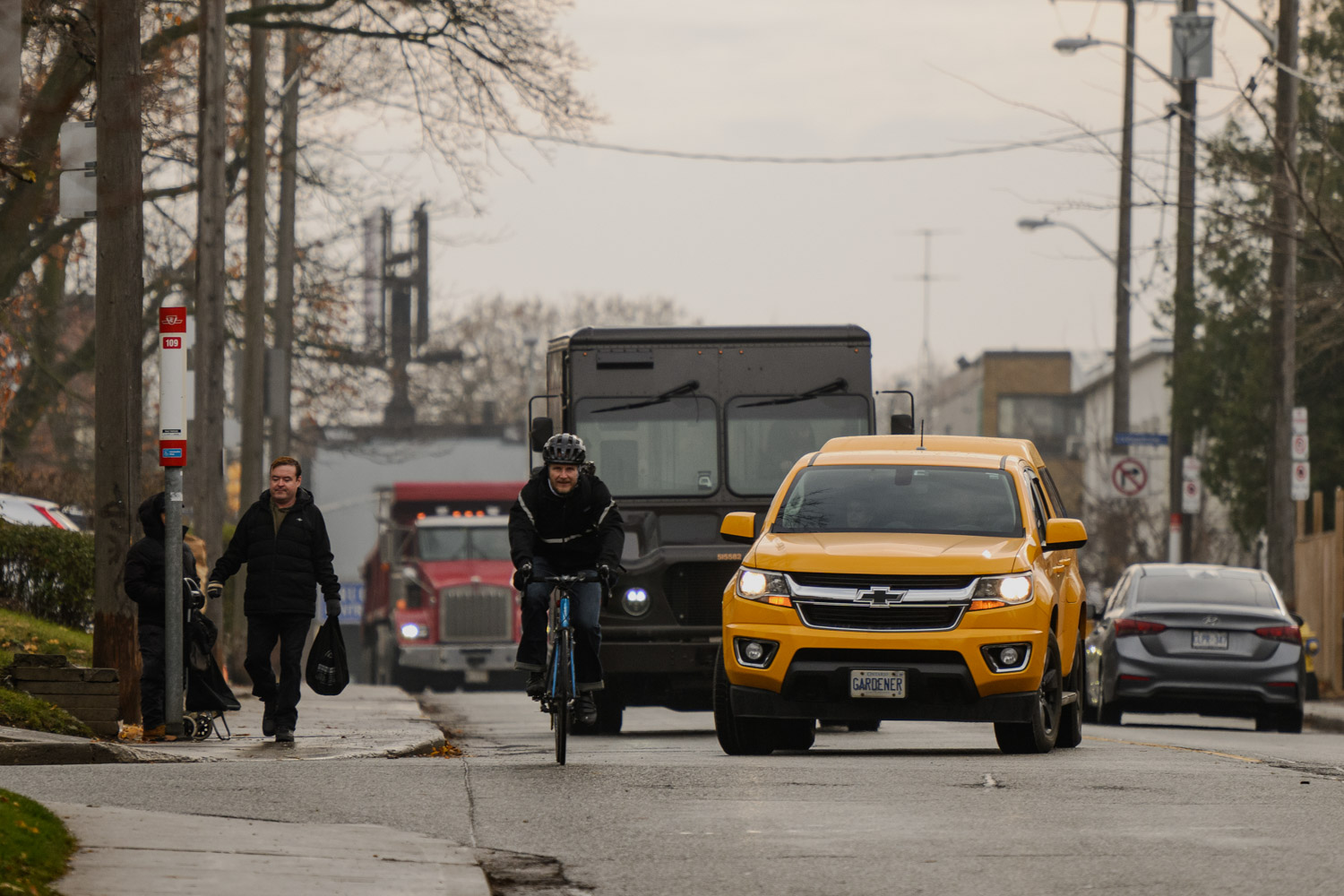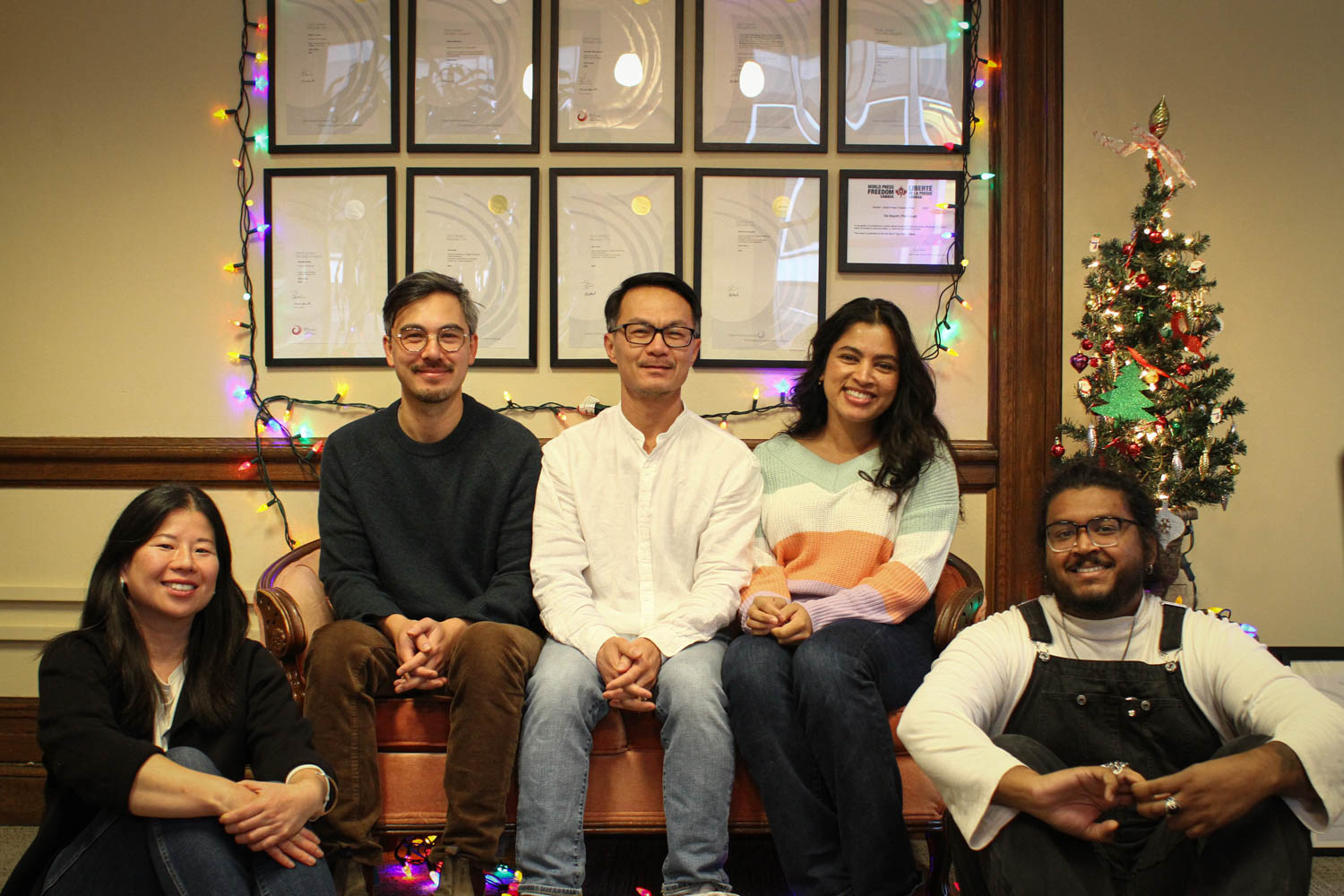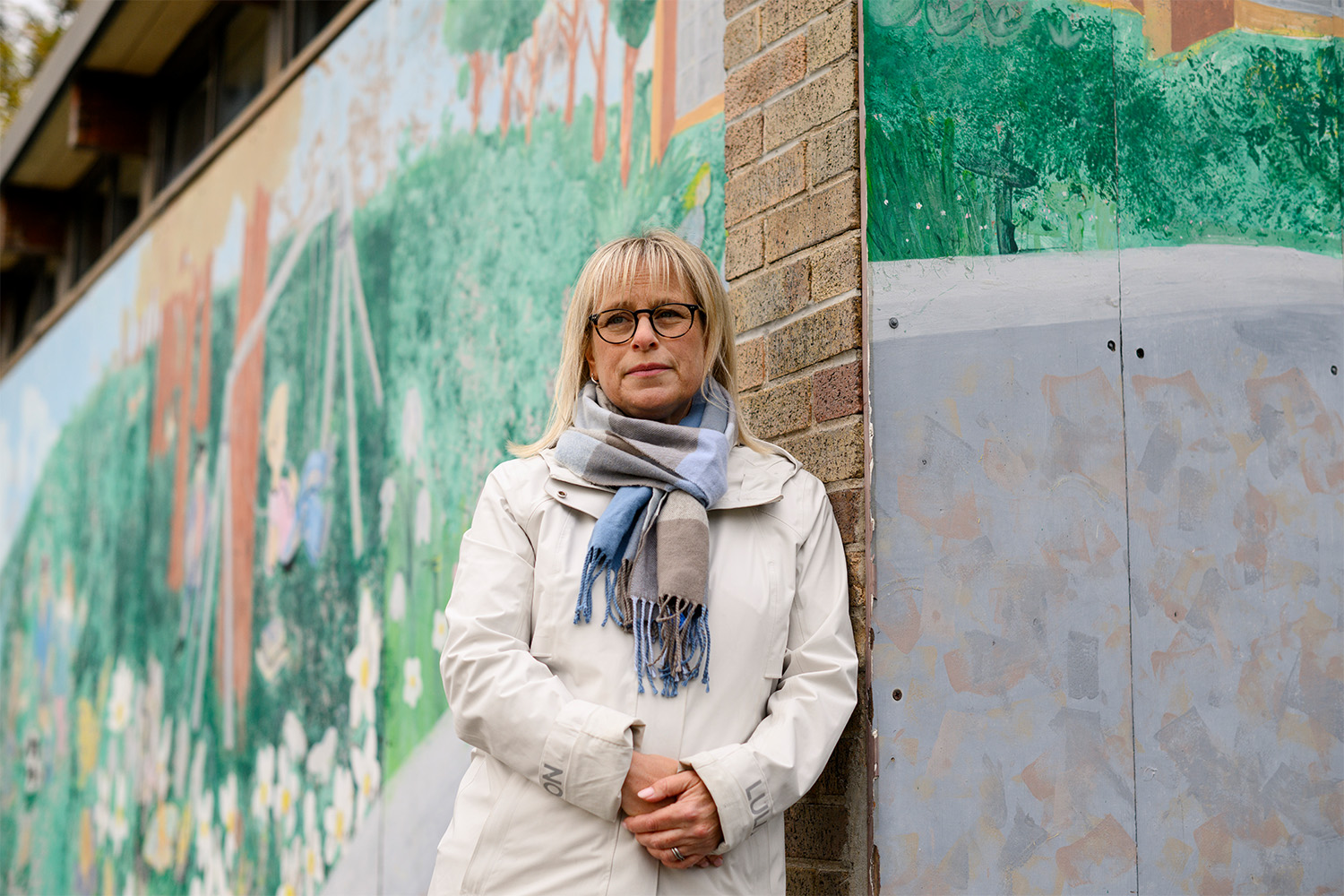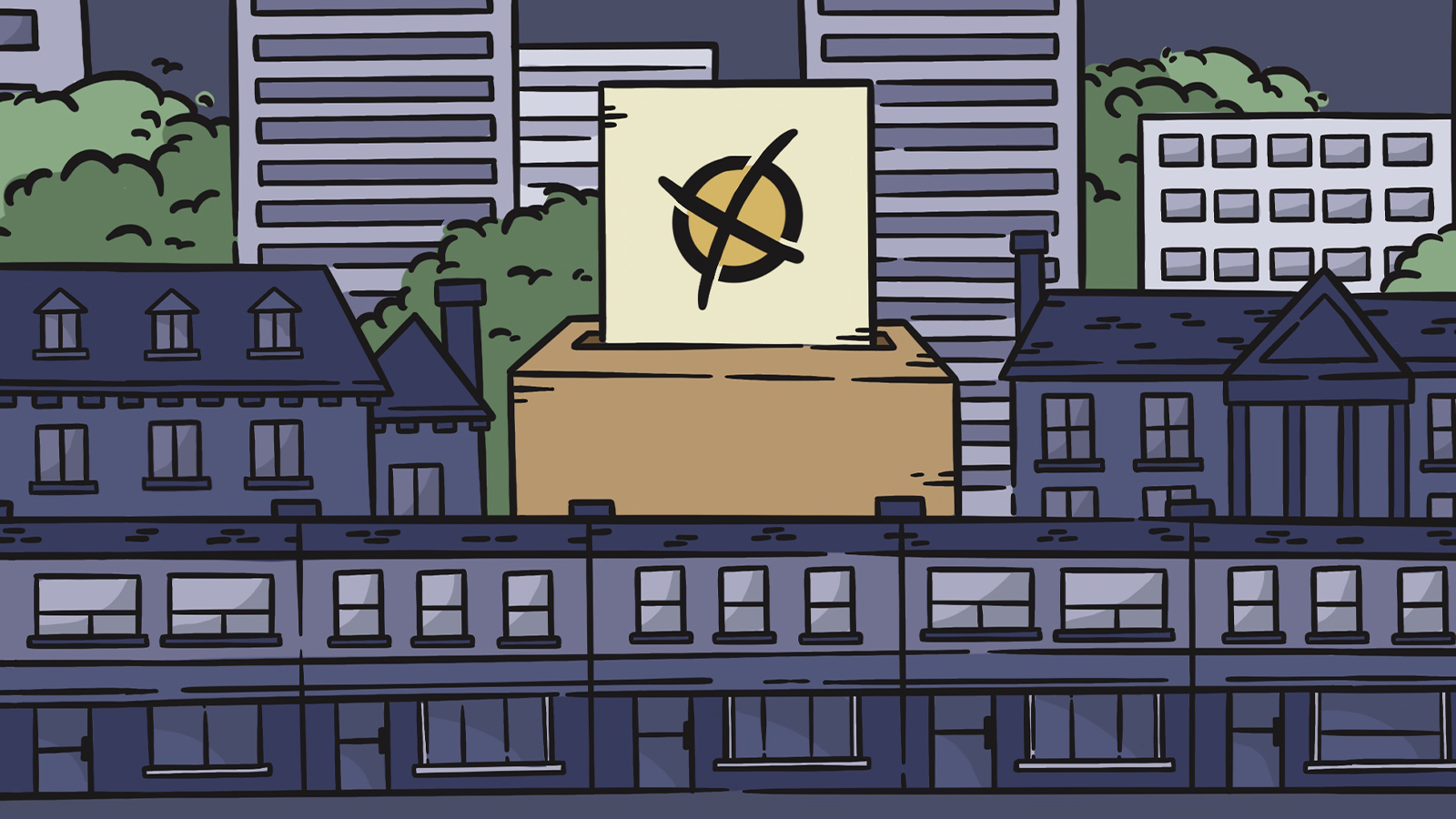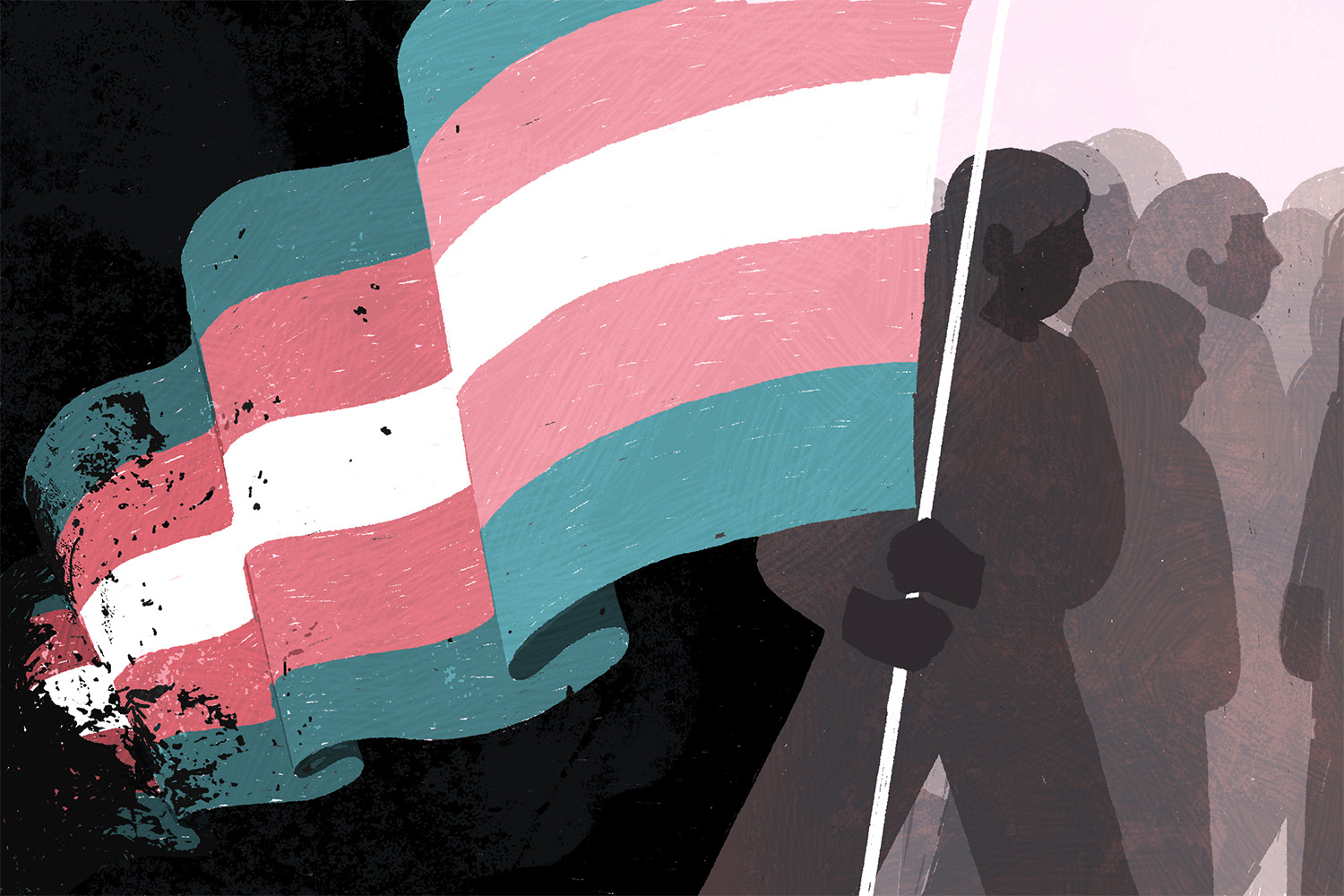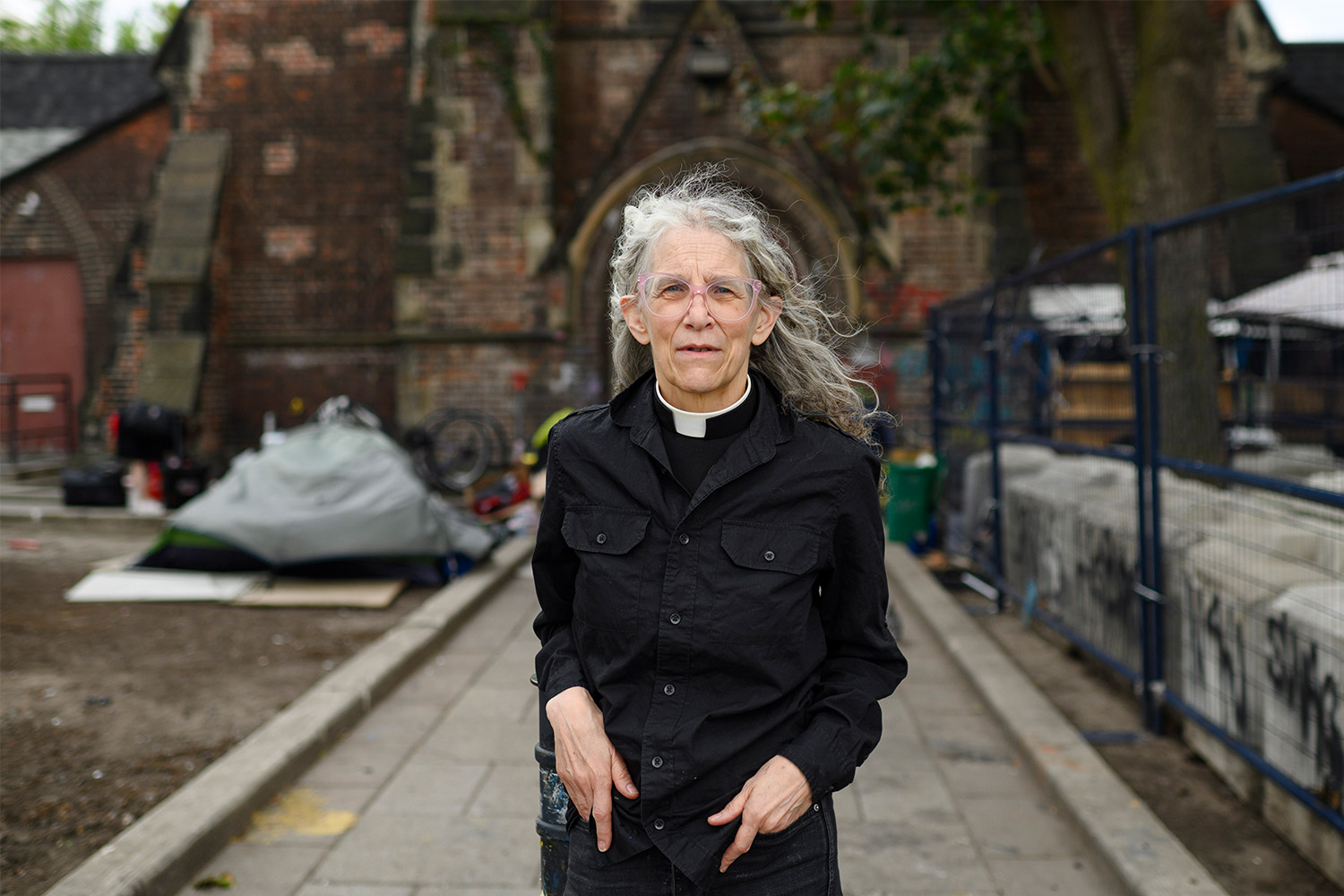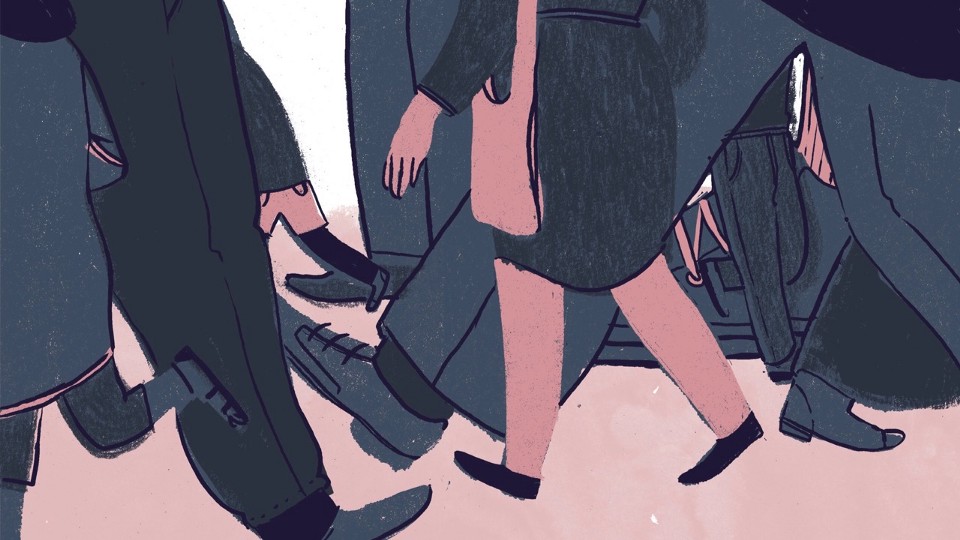
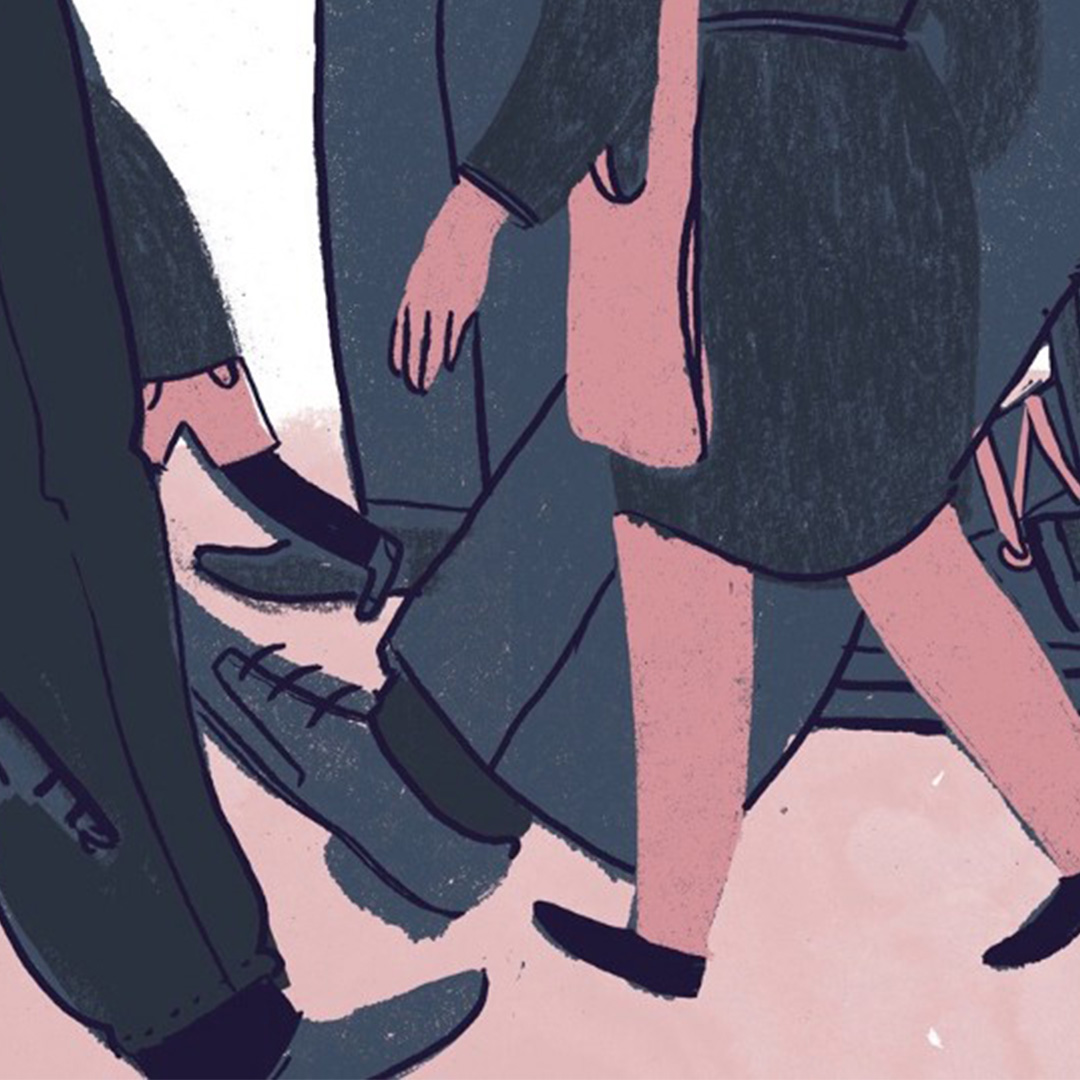
Mary sits in a small red chair meant for a child and plays with her phone, rain-spattered sunglasses perched atop her freckled face. It’s been a hard day. She’s been waiting here at Access Alliance’s Non-Insured Walk-In Clinic, for a couple of hours to follow up on an appointment she had with a nurse practitioner a month ago. She’s also waiting for news from her sister who works on Las Ramblas, the street in Barcelona where earlier this August afternoon a van had plowed through pedestrians, killing 13 people.
The slim 38-year-old lives nearby, on the upper floor of a house. Originally from Venezuela, Mary completed her diploma in tourism and hospitality at George Brown College last year and took a minimum wage job on an assembly line at a cake factory. That’s when she began to experience shooting pain in her right wrist and in her feet. Her temporary work permit didn’t allow her access to OHIP, so instead of seeing a doctor she bought a bottle of ibuprofen. Her shifts, which started at 7 a.m. and sometimes didn’t finish until 6 p.m., were grueling. Her bosses heard she was taking an income tax course to bolster the accounting degree she’d earned in Venezuela and refused to give her time off, telling her they needed her when they needed her. Sometimes they wouldn’t let employees go to the bathroom during work hours. She spent her days off sleeping. She could feel herself falling into depression.
Mary quit that job and became a room attendant at a hotel, cleaning 16 rooms in eight-hour shifts for minimum wage. “It’s a physical job,” she says. “It’s not a job you want to do after you’ve been a student for so many years.” The work is occupancy-dependent and unsteady. Because she’s only been doing the job for a few months and is considered part-time, she doesn’t qualify for OHIP, which kicks in for temporary workers in full-time jobs after six months.
Here at the walk-in clinic, the nurses think Mary’s symptoms are stress-related, or possibly due to an iron deficiency. They do blood work to see if anything physical is wrong, and they refer her to a counsellor at the clinic who she won’t have to pay for out-of-pocket. Mary would benefit from going to a doctor for a full check-up but can’t afford it. The clinic, by necessity, takes a triage approach, not a preventative approach. They just don’t have the resources, so they’re doing what they can with what they have.
Mary is one of the approximately 500,000 people in Ontario living without health care, according to OHIP For All, a coalition of health care workers and social service providers that is lobbying the government to grant equal-access to health care for all Ontarians regardless of immigration status. That number includes new immigrants, who qualify for OHIP after three months in Canada, temporary workers in between jobs, international students, and refugees awaiting decisions on their claims. The Access Alliance clinic is one of a handful of places in the city that offers health care, no questions asked, to anyone who can provide a postal code starting with the letter M.
The building at 761 Jane Street is white brick and looks especially haggard on a day when it’s pouring rain. On its first floor it houses a MoneyGram, a coin laundry, a 241 Pizza, and a convenience store. The parking lot behind is littered with crushed coffee cups and empty bottles of Listerine. In the rainy mid-afternoon on a weekday, there is almost no foot traffic. Once upstairs, though, the building explodes with life.
In a small room where each wall is painted fuchsia, royal blue or bright yellow, every red chair is filled. Farah Tanniza waits for her father Mohammad, a recent immigrant from India with a bad shoulder. “He won’t have OHIP for another month,” she says, so she brought him here from Midland Avenue and Danforth Avenue. Her husband dropped them off, but they’ll need to take the more-than-an-hour TTC route home. There are four pregnant women, two baby strollers, crinkly old men sitting and teens milling about. Signs hang on the wall in Farsi, Dari, Arabic, Bengali, Somali, Nepali, Spanish and Portuguese. Somehow, despite all that action, it’s still quiet in here too — the air is thrumming with anticipation.
The area around the clinic, a neighbourhood called Rockcliffe-Smythe, is made up largely of apartment buildings and is home to a large number of Spanish- and Portuguese-speaking Canadians. Nearly a quarter of the neighbourhood qualifies as low-income and 56 percent of the neighbourhood’s families make less than $50,000 a year, far below the city’s average median household income of $65,829. The area is riddled with people suffering from health problems: its rates of diabetes, asthma, and high-blood pressure are all well above the Toronto average. Nearly 25 percent of people don’t have continuous primary care.
“A lot of the people do under-the-table work,” says the clinic’s nurse practitioner Krystyna Moore, an exuberant 65-year-old who came out of retirement to work part-time at the clinic. They’re trying to bank overtime and aren’t watching the various stresses — from arthritis to lower back pain — that repetitive work can cause to their bodies. And they don’t come to the clinic until something is seriously wrong. “They’ll do the work because they need to bring funds home to feed their family,” Moore says. Oftentimes, diet is a major factor in the health of the neighbourhood’s residents, and most of them aren’t people who can afford to make drastic lifestyle changes. “If we can diagnose diabetes or heart disease early enough, there’ll be less risk of those people getting chronic conditions,” she says. “People who have high-blood pressure and diabetes, they need medication, not because we think they should get stuff for free, but to prevent them from getting leg ulcers or kidney issues so they don’t end up in emerg needing dialysis.”
Poverty is the single largest determinant of health, according to the World Health Organization, and it’s linked to all manner of chronic disease, including diabetes, heart disease, and high-blood pressure. Treating chronic disease costs Canadians $190 billion a year — more than half of that amount due to lost productivity by people suffering. “We saw more than 500 clients last year,” says Sideeka Narayan, who manages the clinic. “Most, if not all, are living in poverty. We see a lot of pregnant women who come at all stages of the pregnancy who have not yet had any prenatal care. We see a lot of chronic disease but it comes to us undiagnosed — things like high blood pressure and pain, or polymedication from their country that indicate there’s more going on.” (Polymedication means taking three or more prescription pills a day, which can be dangerous if not properly monitored.) The nurses on staff often don’t have a patient’s medical history, and use a dial-an-interpreter service, which involves a nurse speaking into one receiver, the patient speaking into another, and the translator in the middle making each person’s perspective clear.
“People who have high-blood pressure and diabetes, they need medication, not because we think they should get stuff for free, but to prevent them from getting leg ulcers or kidney issues so they don’t end up in emerg needing dialysis.”
By 4:45 p.m., the clinic is at capacity. Before long, it’s standing room only. The receptionists begin warmly turning people away, suggesting they come back earlier on Monday. The three-hour block in which the clinic books patients is a tight window and the nurses focus on letting no minute go to waste. From 5 p.m. to 7 p.m., Krystyna Moore sees patients for ten to fifteen minutes, but it’s never enough time. “If it’s something that doesn’t require a huge examination, say a person just says they feel tired, I can give them a blood requisition and off they go,” she says. “But if the person comes in and says, ‘I have no feeling in my left leg and my balance is off,’ I have to do a full neuro. Ten minutes isn’t enough to do a full exam.”
Moore writes prescriptions, does pelvic exams, and takes home whatever charting she can’t finish during her shift. But she can only do so much for people who don’t have access to the broader system, can only hand out so much Tylenol and ibuprofen, the meds the clinic can afford to give out for free. “It’s really frustrating, that problems with people’s eyesight, problems with kidneys can be prevented by a routine medication that I can’t provide,” she says. “I can tell them about it, I can give them a prescription, but they have to have enough money to get it for every single day for the rest of their lives.”
Narayan calls it a health equity issue that people are relegated to a patchwork of services if their situations aren’t straightforward. Someone with chronic disease on a hypertension medication, for example, will have to go to a walk-in clinic or go to a friend for help. “They don’t have any ongoing care,” she says. “They’re effectively barred from the system.”
Three weeks after that August day at the clinic, Mary has quit her job at the hotel, prioritizing her health over a job that’s making her sicker. “Money isn’t everything,” she says. She’s training to start working remotely doing online purchasing for a friend’s company based in the United States. The pay is less than her hotel rate, but the work is steadier and she can do it from home. But it won’t qualify her for OHIP, she says, which means coming back to the clinic for the foreseeable future. “I hope I’m going to feel much better soon so I don’t have to go back,” she says.
“I pay my taxes. I am a temporary resident. Why can’t I get this kind of help? With minimum wage, you cannot afford insurance. It’s impossible.”
Mary’s father is still living in Venezuela, which for years has been plagued with unrest. Her mother and sister live in Barcelona, and her brother lives in Ireland. “I chose Canada because I want to live in a safe place,” she says. “I have a maple tree in my backyard. My house, close to here, is nice.” But life without OHIP and the opportunity to regularly see a doctor is frustrating. “I pay my taxes. I am a temporary resident. Why can’t I get this kind of help?” she asks. “With minimum wage, you cannot afford insurance. It’s impossible.”
For now, she’s taking acetaminophen every day for persistent pain in her wrist and relying on Access Alliance. Back at the clinic, her blood work turned up clean. “They say that it’s fatigue,” she says. The nurse there referred her to a dietitian. She’s been recording her daily nutrition intake for two weeks so they can tweak some of her habits at her next appointment. In another two weeks, she’ll see a counsellor to try to manage her stress better, too. “I’m so glad that I discovered this place. I know they’re helping, even if they’re not doctors,” she says. “They’re trying to figure out why I’m so tired. I’m young, and I don’t have children. All my energy is for me. So what’s wrong?”
